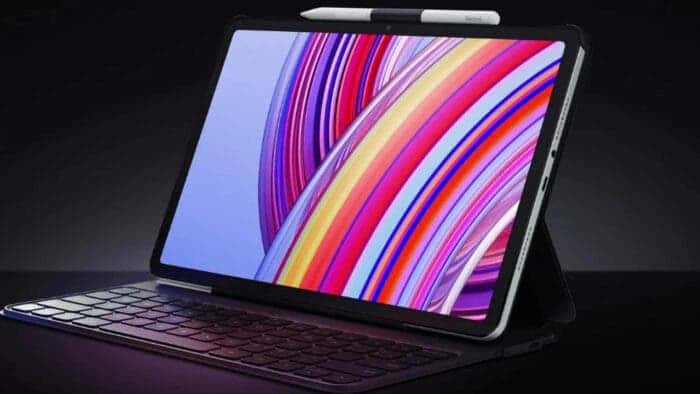POCO, the performance-oriented sub-brand of Xiaomi known for its powerful smartphones, is making a foray into the tablet market with the introduction of the POCO Pad. Scheduled for launch alongside the POCO F6 series on May 23rd, the POCO Pad promises to deliver a compelling combination of performance, display quality, and long battery life, catering to users who prioritize entertainment, productivity, and on-the-go creativity.
POCO Unveils its First Tablet: The POCO Pad

While official specifications are yet to be revealed, leaks and certifications paint a clear picture of what to expect from the POCO Pad. Here’s a detailed breakdown of the anticipated features:
Processor and Operating System:
The POCO Pad is rumored to be powered by the Qualcomm Snapdragon 7s Gen 2 processor, a capable mid-range chipset built on a 4nm process. This processor should provide sufficient performance for everyday tasks, multimedia consumption, and even light gaming. The tablet will run on Android 14 with POCO’s custom user interface, HyperOS 1.0. This combination offers a clean, user-friendly experience with the latest features and potential optimizations for performance and battery life.
Display and Connectivity:
The POCO Pad is likely to boast a large 12.1-inch IPS LCD display with a resolution of 1600 x 2560 pixels. This translates to a crisp and vibrant viewing experience. Ideal for watching movies, browsing the web, or working on creative projects. With a rumored 120Hz refresh rate, the display should offer smooth scrolling and responsiveness, enhancing the overall user experience.
Connectivity-wise, the POCO Pad is expected to be Wi-Fi only. Supporting the latest Wi-Fi 6 standard for fast and reliable wireless connections. This caters to users who primarily consume content or work online through Wi-Fi networks. Bluetooth 5.2 connectivity is also likely, ensuring seamless pairing with wireless headphones, speakers, and other peripherals. While there’s no confirmation about NFC support, its absence might be a consideration for users who rely on contactless payments.
Cameras and Sensors:
Both the front and rear cameras of the POCO Pad come with 8-megapixel sensors. While not top-of-the-line, these cameras should suffice for basic video calls and casual photography. The POCO Pad is likely to include essential sensors like an accelerometer, gyroscope, and proximity sensor, enabling features like automatic screen rotation and wake/sleep functionality.
Battery and Design:
The POCO Pad will pack a large 10,000mAh battery, promising long-lasting usage on a single charge. This is particularly beneficial for users who travel frequently or need their tablet to last throughout a workday. The tablet will also support 33W fast charging, allowing for quick top-ups when needed.
Design details are scarce at the moment, but leaks suggest the POCO Pad will be available in three color options: Dark Grey, Blue, and Green. The dimensions will be around 280 x 181.9 x 7.5 mm. Making it a relatively portable tablet for its size.
Market Availability and Competition:
While there’s no official confirmation yet, considering the previous F5 Pro model’s availability in global markets, it’s possible that the POCO Pad will be launched there as well. We still need to see the exact markets where the POCO Pad will be available.
The POCO Pad’s closest competitor in terms of expected specifications is the Redmi Pad Pro, another Xiaomi sub-brand tablet launched in China recently. Both tablets share similar features, suggesting the POCO Pad might be a rebranded version with a global market focus.
Conclusion:
The POCO Pad positions itself as a mid-range tablet offering a large display, decent performance, and long battery life at a competitive price point (pricing details are yet to be revealed). While official details are still awaited, the POCO Pad seems like a compelling option for users seeking a versatile and affordable tablet for entertainment, productivity, and casual gaming. Whether it can carve out a niche in the competitive tablet market heavily dominated by established brands like Samsung and Apple will depend on its final specifications, pricing strategy, and overall user experience.





